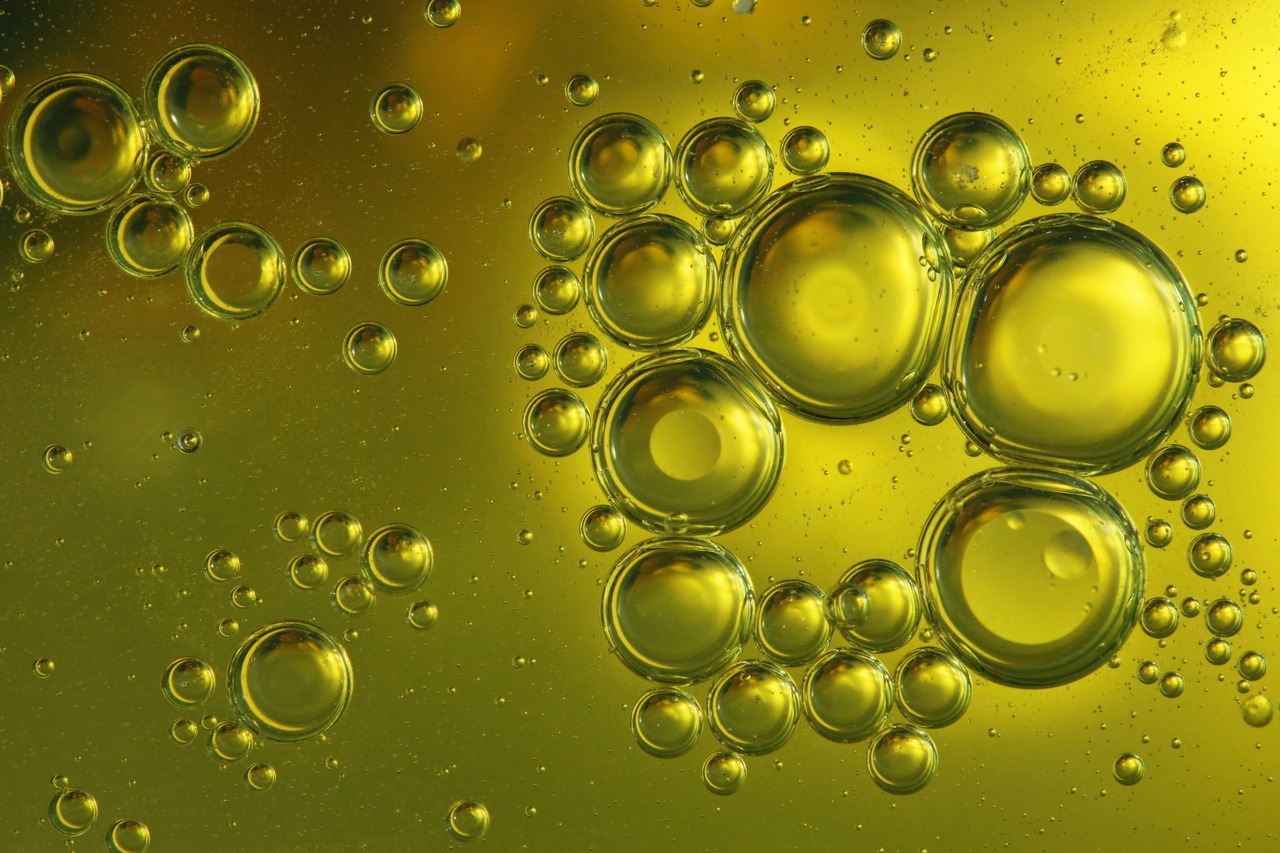CO2 extracts in their native form are lipophilic (fat-soluble) complexes, which limits their use to those cases where the use of ingredients in the form of oils is acceptable. There are many such cases – maybe even the majority, but still there are a number of practical situations where the ingredient needs to be dissolved in water and there are no ways around this limitation. In such situations, the direct use of fat-soluble CO2 extracts is not possible. The most typical examples of such situations in the food industry are soft drinks, in the cosmetics industry – non-alcoholic tonics and lotions.
However, the problem can be solved by converting the CO2 extract into a water-soluble form – this is done by making emulsions. Although water and oil do not dissolve directly in each other, careful mechanical and ultrasonic separation and the choice of emulsifiers can ensure that the solution of CO2 extract in water is sufficiently stable and does not split off over a long period of time (we currently guarantee the stability of the emulsion and no demixing within a year, which is sufficient for most practical applications).
Emulsions are divided into two groups according to the degree of distribution – actual emulsions and microemulsions. Microemulsions are those emulsions in which the size of the oil particles dissolved in water does not exceed the ten to the minus sixth power. Microemulsions are the most stable over time – some of them don’t cleave for years, while others never cleave at all.
The products manufactured by Biozevtika are precisely microemulsions, although for the sake of simplicity we often refer to them simply as emulsions. The warranty against delamination (splitting) is granted for 1 year. These products are translucent solutions in appearance, and fully correspond to the original product (CO2 extract) in terms of taste, smell and usage properties. When added to water, it gives a slight, barely noticeable opalescence – an unprepared observer will most likely not even notice, considering the solution completely transparent. This quality makes the ingredient available for use in aqueous media that do not allow turbidity in the end product (such as beverages).
General information on emulsions of CO2 extracts
- The content of CO2 extract in emulsions ranges from 1-5%
- The guarantee period for the emulsion stability is 1 year
- The emulsions are translucent, when added to an aqueous solution they quickly do not give opalescence
- Emulsions are sterile – CO2 extract itself is a powerful natural preservative
- We can emulsify any CO2 extract we produce (see list of food extracts here, cosmetic extracts here). But if we have not previously mass-produced emulsions from the desired CO2 extract, it may take some time to work out the necessary technological nuances. A list of the most established bulk emulsions can be found here
- In cosmetic products, emulsions are biologically even more active than the extract itself, since the active ingredients are broken down more finely and the active ingredients can penetrate the skin better
- In food products, emulsions produce a more noticeable taste effect with the same amount of CO2 extract compared to plant-based CO2 extracts. This happens due to a fine breakdown and a more subtle and sparse “smearing” of the molecules that cause taste sensations along the taste buds. Therefore, the use of emulsions sometimes makes sense even when the usual CO2 extract is likely to be applicable
- Emulsions based on CO2 extracts can also be made independently using relatively inexpensive equipment. True, the stability of emulsions, most likely, is small (about a week), and they give such a strong opalescence. But if this is acceptable, then the issue of converting CO2 extracts into a water-soluble form for technological purposes will in some cases be more convenient and cheaper to solve on-site by cheap improvised means.
